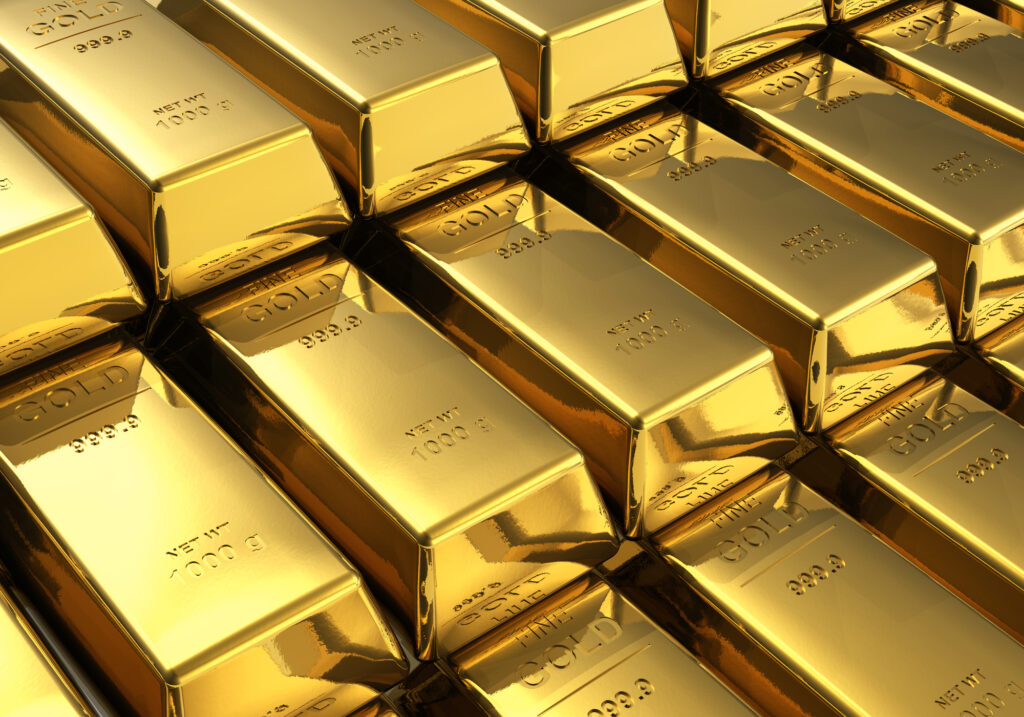In a world constantly amazed by the wonders of nature, the fiery, molten bellies of volcanoes have always been a subject of awe and speculation. These magnificent geological formations not only shape landscapes but also play a crucial role in the creation of many precious materials. However, did you know that volcanoes also produce one of the most sought-after treasures known to mankind – gold? Yes, you heard that right. Gold, the illustrious symbol of wealth and prosperity, is indeed found in volcanoes, and this fascinating fact has piqued the curiosity of scientists, geologists, and gold enthusiasts alike.
As unusual as it may seem, this captivating concept isn’t the stuff of fantasy or mythology. It’s a real, scientifically observed phenomenon that has been a part of our planet’s geological processes for millennia. The presence of gold in volcanic systems has been recorded and reported in various scientific studies, suggesting a possible link between volcanoes and some of the largest gold deposits on Earth.
However, the question that tickles the imagination isn’t whether gold is found in volcanoes, but rather how much of this precious metal actually emanates from them? How do these fiery behemoths of nature contribute to the world’s total gold reserves? And what are the mechanisms that facilitate this intriguing natural phenomenon?
In this blog post, we aim to answer these questions and delve into the fascinating world of geology and mineralogy, demystifying the phenomena of gold production within volcanoes. Join us as we journey into the fiery depths of the Earth to uncover this golden secret.

Can You Find Gold In Or Around A Volcano?
Yes, it is indeed possible to find gold in and around a volcano. However, this doesn’t mean you’ll find nuggets of gold lying around the next active volcano. The process by which gold is associated with volcanoes is complex and involves geological activities spanning millions of years.
The process starts deep within the Earth’s mantle, where molten rock, or magma, is generated. This magma can contain various dissolved elements, including precious metals like gold. As this magma rises towards the surface, it can form a volcano. Over time, the magma cools and crystallizes, forming rocks. The remaining water-rich, metal-enriched fluid often gets squeezed out of the crystallizing magma and rises further. This fluid can infiltrate the surrounding rocks and precipitate minerals as it cools, forming hydrothermal veins rich in various elements, including gold.
These veins can contain significant amounts of gold, depending on the concentration of gold in the original magma and the specifics of the fluid flow and cooling process. Many of the world’s most productive gold mines are associated with these hydrothermal veins, some of which are found in areas of past or present volcanic activity.
However, it’s worth noting that not all volcanoes are associated with significant gold deposits. The specific geological conditions necessary for gold enrichment don’t occur at every volcano. Furthermore, even when gold is present, it’s usually mixed with other minerals and requires extensive processing to extract.
In summary, while you won’t find pure gold nuggets just lying around a volcano, the geological processes associated with volcanoes can and do contribute to the formation of significant gold deposits.
How Much Gold Comes Out Of A Volcano?
The amount of gold that can be associated with a volcano is extremely variable and depends on numerous factors, including the concentration of gold in the original magma, the volume of magma, the specifics of the hydrothermal fluid flow and cooling process, and the geological history of the area.
It’s important to note that gold doesn’t come out of a volcano in the way that, for example, lava or ash does. The gold is contained within the magma deep below the volcano, and it can become concentrated in hydrothermal veins in the surrounding rocks as the magma cools and crystallizes. These processes occur over very long geological timescales, often millions of years.
The gold associated with a particular volcanic system can range from negligible amounts to significant concentrations that can be economically mined. Some of the world’s largest gold mines are associated with ancient volcanic systems and have produced many tons of gold over their operating lives. However, these are the exceptions rather than the rule. Most volcanic systems do not produce significant amounts of gold.
In terms of specific numbers, it’s challenging to give an average or typical amount of gold associated with a volcano, as the range is so broad and depends on so many factors. However, to put things in perspective, economically viable gold deposits might contain a few grams of gold per ton of rock, or in exceptional cases, a few tens of grams per ton. These concentrations might not sound like much, but they can add up to significant amounts of gold over the large volumes of rock involved in a mining operation.
It’s also important to note that, even when gold is present in economically viable concentrations, extracting it is a complex and costly process that involves crushing and processing large amounts of rock and often using hazardous chemicals. So, while the idea of volcanoes producing gold might sound exciting, the reality is a lot more complicated and less glamorous.
Examples Of Volcanoes That Have Contained Significant Amounts Of Gold In Them
Volcanoes, or rather the geological systems associated with them, can indeed be significant sources of gold, although the gold is usually found in the surrounding rocks, not in the volcanoes themselves. Here are a few examples of significant gold deposits that are associated with volcanic systems:
Grasberg Mine, Indonesia: The Grasberg mine in Indonesia is considered the biggest gold mines and the second most large copper mine in this planet. The gold deposit is located in the Sudirman Mountain Range in Papua, and it is a part of a geological formation known as the ‘Ring of Fire’, a major spot in the area of the Pacific Ocean where there are huge earthquakes and volcanic happen historically. The gold and copper are found in a mineralized system associated with the Grasberg Igneous Complex, a past volcanic system.
Lihir Gold Mine, Papua New Guinea: The Lihir Gold Mine in Papua New Guinea is one of the world’s major gold mines, with a resource of several million ounces of gold. The deposit is located within the Luise Caldera, an inactive volcanic mountain, and is related with an active geothermal system.
Porgera Gold Mine, Papua New Guinea: The Porgera Gold Mine is another huge and historic gold mine situated in Papua New Guinea. The deposit is found in the high part of the Enga province, and the gold is found in a type of deposit known as an epithermal deposit, which is often associated with volcanic systems.
Yanacocha Gold Mine, Peru: Yanacocha in Peru is known to be one of the biggest gold mines in the world. The gold at Yanacocha is found in a type of deposit known as a high-sulfidation epithermal deposit, which is associated with a past volcanic system.
Waihi Gold Mine, New Zealand: The Waihi Gold Mine in New Zealand is another type of a gold mine associated with a volcanic system. The gold is found in epithermal veins within andesitic and rhyolitic rocks, which are types of volcanic rock.
These examples highlight the significant role that volcanic systems can play in the formation of major gold deposits. However, it’s important to remember that these deposits represent the exception rather than the rule, and not all volcanic systems are associated with significant amounts of gold.
What Are The Examples Of A Volcano Spewing Out Gold?
While the idea of a volcano spewing out gold may capture the imagination, it’s not quite how the process works in reality. Gold, along with other metals, is present in the magma deep within the Earth that feeds volcanoes. However, the process by which gold becomes concentrated into mineable deposits is complex and occurs over long geological timescales.
As magma rises towards the surface, it cools and crystallizes, forming rock. The remaining fluid, which can be rich in metals, gets squeezed out from the crystallizing magma and rises further. This fluid can infiltrate the surrounding rocks, and as it cools, it precipitates minerals, potentially forming hydrothermal veins rich in gold.
Thus, while volcanoes can be associated with significant gold deposits, the gold doesn’t spew out of the volcano along with the lava or ash during an eruption. Instead, the gold is concentrated in the surrounding rocks over thousands to millions of years through the processes described above.
Therefore, there are no known instances of volcanoes directly spewing out gold. The gold associated with volcanic systems is found in the surrounding rocks and requires extensive mining and processing to extract.

